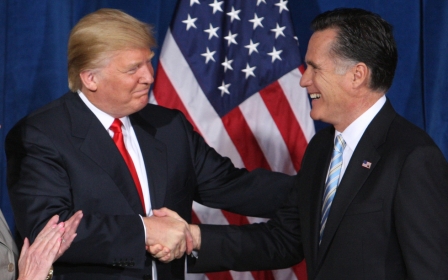President-elect Trump is biggest loser ever in popular vote count

Donald Trump’s "huge win" in the US presidential election is marred by the fact that it is the biggest loss for a winning candidate in terms of the popular vote. Hillary Clinton received more than 1.3 million votes more than the president-elect nationwide.
READ: Trump and the Middle East: What he could do with Iran, Israel, Syria
By Friday afternoon, Clinton had amassed 63,049,607 votes in the 8 November contest, compared with Trump’s 61,610,484, according to the nonpartisan Cook Political Report’s tracker. The former secretary of state’s lead has been consistently climbing since Trump’s victory.
The figures are not final. Calculating the popular vote entails adding up final tallies from all the states and territories, which organise their own elections. But Clinton’s margin in the popular vote, which exceeds 1 percentage point, is unprecedented for a losing candidate in modern history and is expected to grow as more results from big Democratic-leaning states come in.
The US presidential election is not decided by the total amount of votes, but by electoral college votes that are awarded by individual states.
The current system gives swing states, which are typically mid-sized, a disproportionate weight in the elections. It also plays down the relevance of votes in states that lean Republican or Democrat.
Traditionally, the electoral college count amplifies the result of the popular vote. For example, President Barack Obama received almost five million more votes than his 2014 opponent Mitt Romney - about 4 percent of the total. But the president overwhelmingly won the electoral college, 332 to 206.
But there have been exceptions dating back to 1825. Previous to Trump, four US presidents had clinched the presidency without winning the popular vote.
Most recently, Democratic candidate Al Gore received 543,816 votes more than George W Bush. But the Republican candidate went on to win the election after reaching the required 270 electoral colleges, following a controversial victory in a close Florida election.
Besides Trump and Bush, the list of presidents who lost the popular vote includes John Quincy Adams, Rutherford B Hayes and Benjamin Harrison.
Coincidentally, Trump, Bush, Hayes and Harrison are all Republicans, while Adams predates the two-party system the US has today.
READ: What will Trump do the day after his 9/11?
Andrew Jackson, Adams’ opponent in the 1828 presidential election, had the biggest ratio in popular vote advantage for a losing candidate - more than 10 percentage points. However, Clinton has by far the biggest popular victory in terms of numbers for a candidate who was defeated.
While many Americans, including Trump himself, have criticised the electoral college system, changing the way the US chooses a president would require amending the constitution - a lengthy process that requires the approval of two-thirds of lawmakers, including those from states that may benefit from the current system.
In last week’s election, Trump won where it mattered most, defeating Clinton in almost all the major swing states that determined the outcome of the election.
He narrowly carried Florida, as well as the Midwestern states of Wisconsin, Ohio, Pennsylvania and Michigan. Trump garnered 93 electoral college votes from the five states, where his margin of victory adds up to about 650,000 votes collectively. In California, Clinton beat Trump by more than three million votes, but she only won 55 electoral college votes from the state.
READ: Trump USA means big troubles ahead for ‘Brand Israel’
Commentators have used the discrepancy between the popular vote and the election outcome to make a point about a different argument.
For example, the Atlantic’s Andrew McGill argued that the Democratic candidate’s growing lead in the nationwide count proves that Clinton did not fail in exciting the liberal and progressive base - a popular theory among party critics. Others made the argument that the Midwest, known as the Rust Belt for its industrial past, cost Clinton the election because of her support for trade deals that hurt American workers.
What is indisputable, however, is that Trump won according to the rules of the game, even if some consider the system archaic and unfair.
New MEE newsletter: Jerusalem Dispatch
Sign up to get the latest insights and analysis on Israel-Palestine, alongside Turkey Unpacked and other MEE newsletters
Middle East Eye delivers independent and unrivalled coverage and analysis of the Middle East, North Africa and beyond. To learn more about republishing this content and the associated fees, please fill out this form. More about MEE can be found here.




